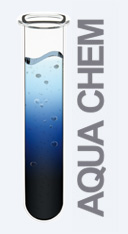Powdered Resins functions:
Capture of suspended solid and colloids
Thanks to its great flexibility, precoat filter can perform different functions simultaneously: ion exchange (limited in quantity) and filtering of suspended oxides and colloids. Circuits in conventional or nuclear thermal cycles are mainly manufactured in carbon steel, whose corrosion products are characterized by their size and electric surface charge. The characteristics of iron oxides, which may need to be removed with a precoat filter, will vary according to whether the cycle pH is high, neutral or semineutral.
Experience has shown that a powdered resin coat in a conventional cycle at pH > 9 gives good filter results even when the coat consists of a 2:1 dry weight ratio of ammonia cation resin and anion resin. This is party aided by the shape and size of the oxides present, especially Fe3O4, which cause them to be captured by the coat. These circumstances create a top oxide capture rate which may reach as much as 99% of the oxides entering the precoat filter.
In semineutral conditions, with pH < 8.2, and where oxygen is present, the shape of the oxides changes, their most common form being α-Fe 2O3, while other changes involve their size and electrokinetic potential. Therefore, to filter these oxides, the powdered resin coat’s residual electrokinetic capacity needs to be exploited in addition to their physical capture capacity. Consequently the anion component needs to be in a dry weight ratio of at least 1:1 to the cation resin (whether in ammonia form at a pH of 8.2 or in hydrogen form in a neutral cycle).
Clearly, with neutral or semineutral pH, the resin coat will need to have a deep filtering capacity rather than on the surface. The resin coat’s filter capacity does not lie only in the first 2 mm of thickness, as is the case of inert materials, but it extends for the whole depth (6-7 mm), creating a real physical-electrokinetic mesh capable of intercepting colloids smaller than 0.45 micron.
